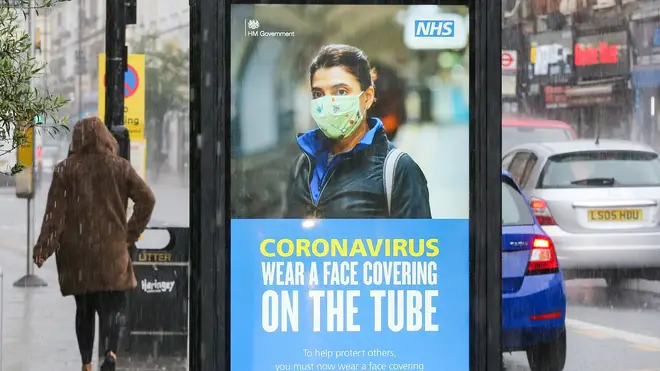
Iain Dale 7pm - 10pm
19 June 2020, 16:04

The rate of spread of the coronavirus infection across the UK is shrinking, new figures published by the Government show.
For the UK as a whole, the current growth rate is minus 4% to minus 2% and the estimate of the reproduction number, referred to as R, remains at 0.7 to 0.9.
The growth rate reflects how quickly the number of infections is changing day by day, and, as the number of infections decreases, is another way of keeping track of the virus.
If the growth rate is greater than zero, and therefore positive, then the disease will grow, and if the growth rate is less than zero, then the disease will shrink.
It is an approximation of the change in the number of infections each day, and the size of the growth rate indicates the speed of change.
For example, a growth rate of plus 5% is faster than a growth rate of plus 1%, while a disease with a growth rate of minus 4% will be shrinking faster than a disease with growth rate of minus 1%.
Listen & subscribe: Global Player | Apple Podcasts | Google Podcasts | Spotify
Until the figures were published for the first time on Friday, the Government had only been giving details of the R value of the disease - the average number of people an infected person is likely to pass it on to.
R estimates do not indicate how quickly an epidemic is changing and different diseases with the same R can result in epidemics that grow at very different speeds.
For instance, a disease with R=2 with infection lasting years will grow much more slowly than a disease with R=2 with infection lasting days.
Growth rates provide different information from R estimates, by suggesting the size and speed of change, whereas the R value only gives data on the direction of change.
To calculate R, information on the time it takes for one set of people in an infected group to infect a new set of people in the next group is needed.
However, the growth rate is estimated using a range of data similar to R, but it does not depend on the "generation time" and so requires fewer assumptions to estimate.

Beijing raises its emergency level as 140 new coronavirus cases reported
Neither measure - R or growth rate - is better than the other but each provides information that is useful in monitoring the spread of a disease.
Experts say each should be considered alongside other measures of the spread of disease.
For the NHS England region, the R value is 0.7 to 0.9, and the growth rate is minus 4% to minus 1%.
- East of England: 0.7-0.9, minus 6% to minus 1%
- London: 0.7-1.0, minus 5% to plus 1%
- Midlands: 0.8-1.0, minus 4% to 0%
- North East and Yorkshire: 0.7-0.9, minus 5% to minus 1%
- North West: 0.7-1.0, minus 4% to 0%
- South East: 0.7-0.9, minus 5% to minus 1%
- South West: 0.6-0.9, minus 6% to 0%
It is most likely that the estimates are somewhere towards the middle of this range.
Last week, the South West of England had the highest R value range at 0.8 to 1.1, while the East of England had the lowest at 0.7 to 0.9.
London, the Midlands, the North West and the South East have R values of 0.8 to 1.0, and the North East and Yorkshire are at 0.7 to 1.0.
Figures this week show the R value in the South West has dropped below 1.0, meaning it no longer has the highest value.